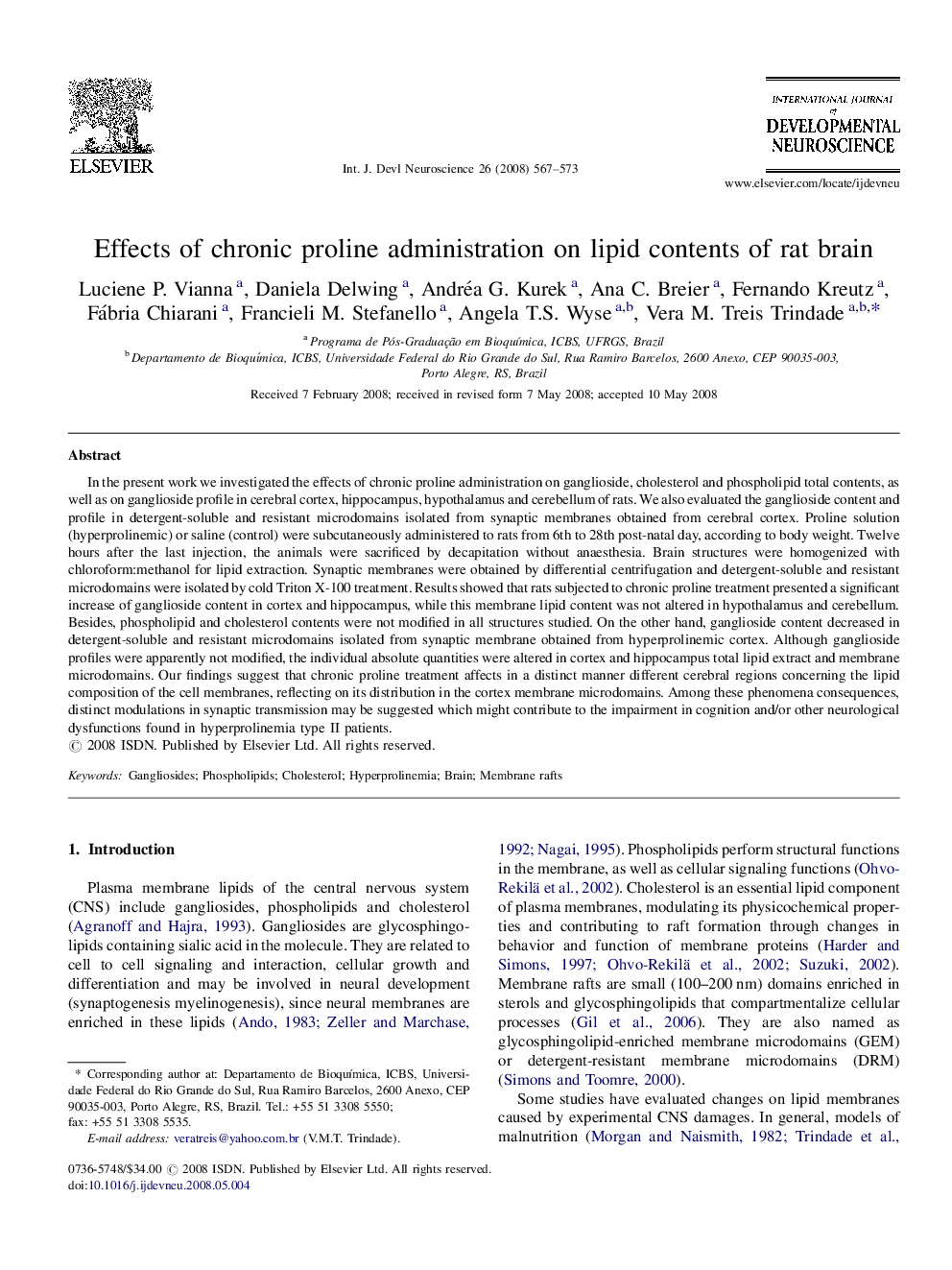| Article ID | Journal | Published Year | Pages | File Type |
|---|---|---|---|---|
| 2787065 | International Journal of Developmental Neuroscience | 2008 | 7 Pages |
In the present work we investigated the effects of chronic proline administration on ganglioside, cholesterol and phospholipid total contents, as well as on ganglioside profile in cerebral cortex, hippocampus, hypothalamus and cerebellum of rats. We also evaluated the ganglioside content and profile in detergent-soluble and resistant microdomains isolated from synaptic membranes obtained from cerebral cortex. Proline solution (hyperprolinemic) or saline (control) were subcutaneously administered to rats from 6th to 28th post-natal day, according to body weight. Twelve hours after the last injection, the animals were sacrificed by decapitation without anaesthesia. Brain structures were homogenized with chloroform:methanol for lipid extraction. Synaptic membranes were obtained by differential centrifugation and detergent-soluble and resistant microdomains were isolated by cold Triton X-100 treatment. Results showed that rats subjected to chronic proline treatment presented a significant increase of ganglioside content in cortex and hippocampus, while this membrane lipid content was not altered in hypothalamus and cerebellum. Besides, phospholipid and cholesterol contents were not modified in all structures studied. On the other hand, ganglioside content decreased in detergent-soluble and resistant microdomains isolated from synaptic membrane obtained from hyperprolinemic cortex. Although ganglioside profiles were apparently not modified, the individual absolute quantities were altered in cortex and hippocampus total lipid extract and membrane microdomains. Our findings suggest that chronic proline treatment affects in a distinct manner different cerebral regions concerning the lipid composition of the cell membranes, reflecting on its distribution in the cortex membrane microdomains. Among these phenomena consequences, distinct modulations in synaptic transmission may be suggested which might contribute to the impairment in cognition and/or other neurological dysfunctions found in hyperprolinemia type II patients.
